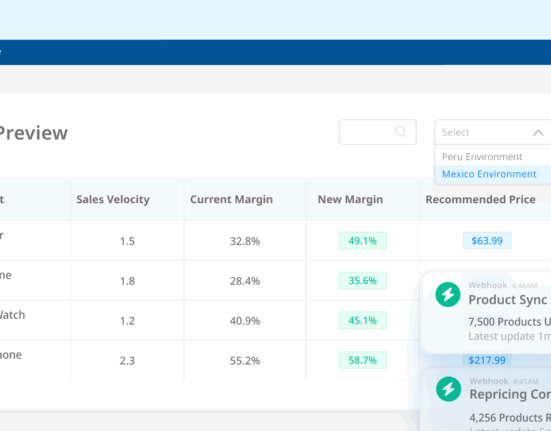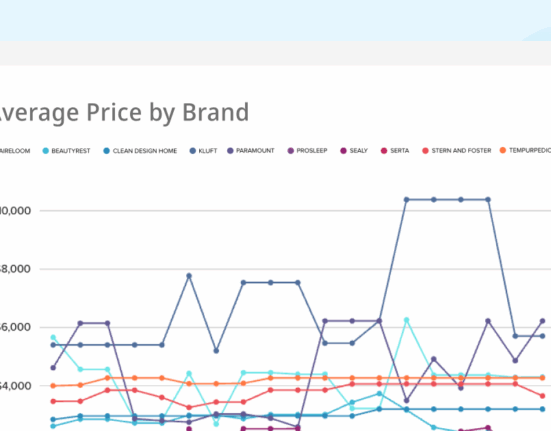Inventory management is an essential component of a company’s supply chain – for both large and small businesses alike. To improve your company’s stock control processes, we’ve highlighted 10 exceptional organizations – along with their inventory management techniques – so we can dig deeper into their operations and learn a thing or two from these giants.
Just-in-Time
Apple
This consumer electronics giant keeps as little inventory on hand as possible. By lowering the amount of stock on hand, Apple carries a lower risk of overstocking and chalking up dead stock in its warehouses. As explained by Tim Cook, CEO of Apple, “Inventory is fundamentally evil. You kind of want to manage it like you’re in the dairy business. If it gets past its freshness date, you have a problem.”
Kellogg’s
Given that Kellogg’s produces mostly perishable goods, it shouldn’t come as a surprise that they use the just-in-time inventory management method for an efficient stock inventory system. Kellogg’s makes sure that just enough products are made to fulfill orders and limited stock is kept.
Xiaomi
Similar to Apple, Xiaomi manages a small inventory by releasing limited quantities of its mobile phones per week. The drawback to this strategy is that eager consumers have to wait for the items to hit the stores – resulting in potential lost sales. Still, Xiaomi still benefits from keeping costs down and eliminating wastage.
Zara
Zara epitomizes “fast fashion” by owning their supply chain and being able to bring items to market extraordinarily quickly.
The brand believes that inventory = death. It commits six months in advance to only 15 to 25 percent of a season’s line. And it only locks in 50 to 60 percent of its line by the start of the season, meaning that up to 50% of its clothes are designed and manufactured smack in the middle of the season.
If a certain style or design suddenly becomes the rage, Zara reacts quickly by designing new styles and getting them into stores while the trend is still peaking, satisfying seasonal demand and exploiting changing customer preferences.
Toyota
Toyota believes in making only what is needed, when it is needed, and in the amount needed. This way, the company can eliminate waste, inconsistencies, and unreasonable requirements, resulting in improved productivity.
In fact, Toyota functions a bit like a supermarket. They make sure to stock the items that customers want, when they want it – but at a quantity that helps them optimize cost savings.
Cross Docking
Walmart
Cross docking is an inventory management practice that allows Walmart to replenish inventory in stores by directly transferring products from inbound trucks to outbound trucks without extra storage, from different suppliers and distribution centers.
This means that products reach stores on time without sitting in inventory for long. Walmart also gets to save on holding costs, allowing them to pass on these savings to customers.
Cost-Per-Touch
IKEA
As a rule of thumb, the more hands that touch the product before it gets to the end consumer, the higher the costs are. Thus, IKEA molded its entire supply chain – with the primary aim of minimizing touches – around its cost-per-touch inventory strategy.
For example, IKEA warehouses also act as retail stores, where visitors help themselves to furniture on the shelves so they can bring them home and assemble the products right away.
ABC Analysis
H&M
H&M prefers to stay on the safe side by manufacturing 80% of its retail inventory in advance and introducing the remaining 20% based on the most current market trends.
To apply it to your business, you need to divide your on-hand inventory into categories based on the 80-20 rule and prioritize and manage these groups separately when it comes to manufacturing, distribution, and fulfillment.
Amazon
Amazon does not stock every single item offered on its site. It stocks only the items that are popular and frequently purchased. If an ‘unpopular’ item is ordered, Amazon would then request it from its distributor who then ships it to the company. The item would then be unpacked and shipped to the respective customer.
Backordering
Tesla
Tesla sells directly to consumers so they keep very little inventory on hand, placing most of their customers on a several month long waiting list. By doing that, the amount of capital and risk tied up with storing excess inventory is minimized, allowing Tesla to redirect capital to continue growing and refining other areas of their business.
It seems that most companies prefer the just-in-time strategy when it comes to managing their inventory. There are definitely more methods deployed by other organizations out there. What inventory management method your company uses really depends on your industry, business model, and organizational goals.
Each inventory management technique comes with clear advantages and drawbacks. You need to choose one (or even decide on a mix of tactics) that works best for your company to minimize cost and maximize revenue.
Editor’s Note: This post was originally published in December 2014 and has since been updated and refreshed for readability and accuracy.









